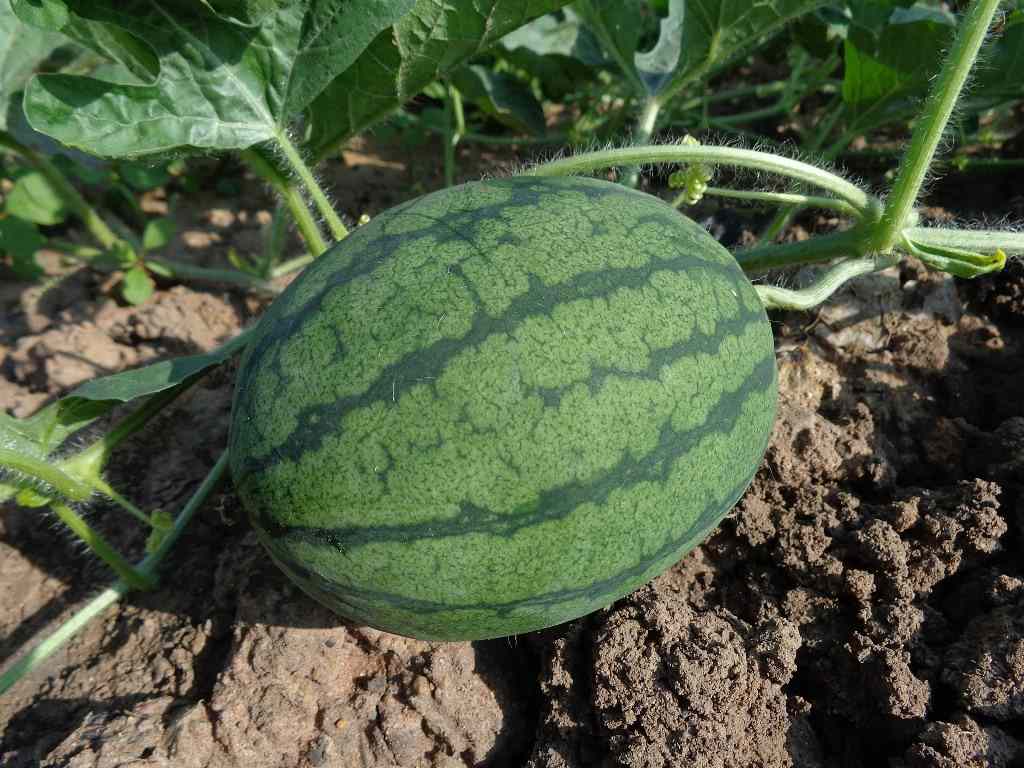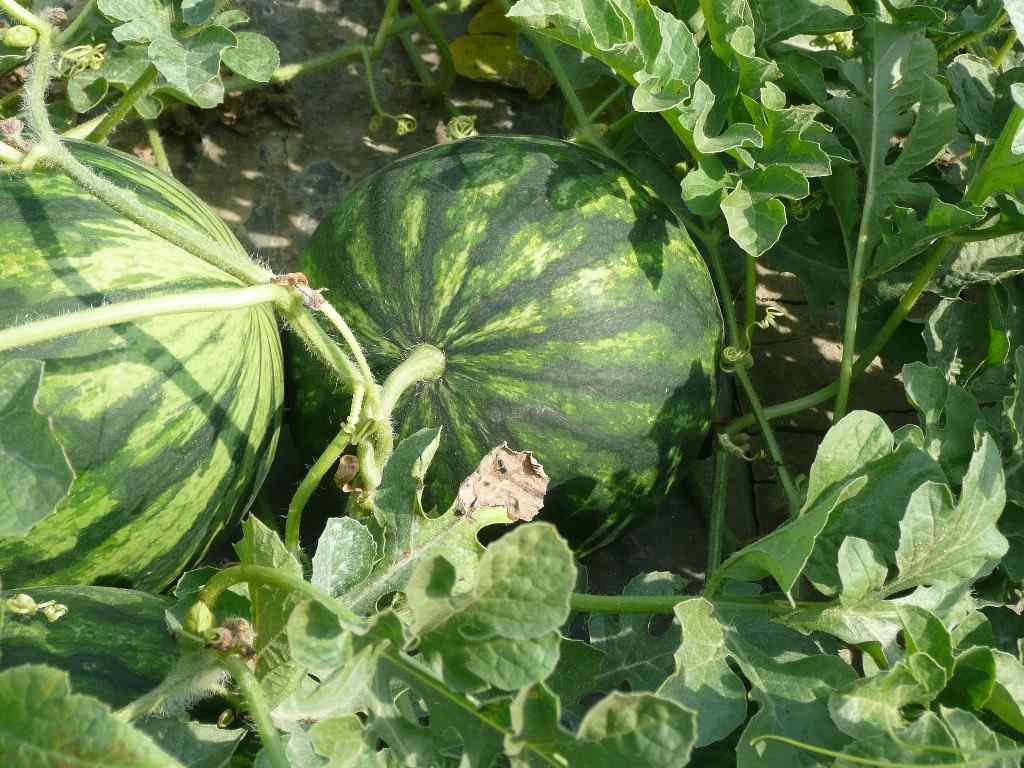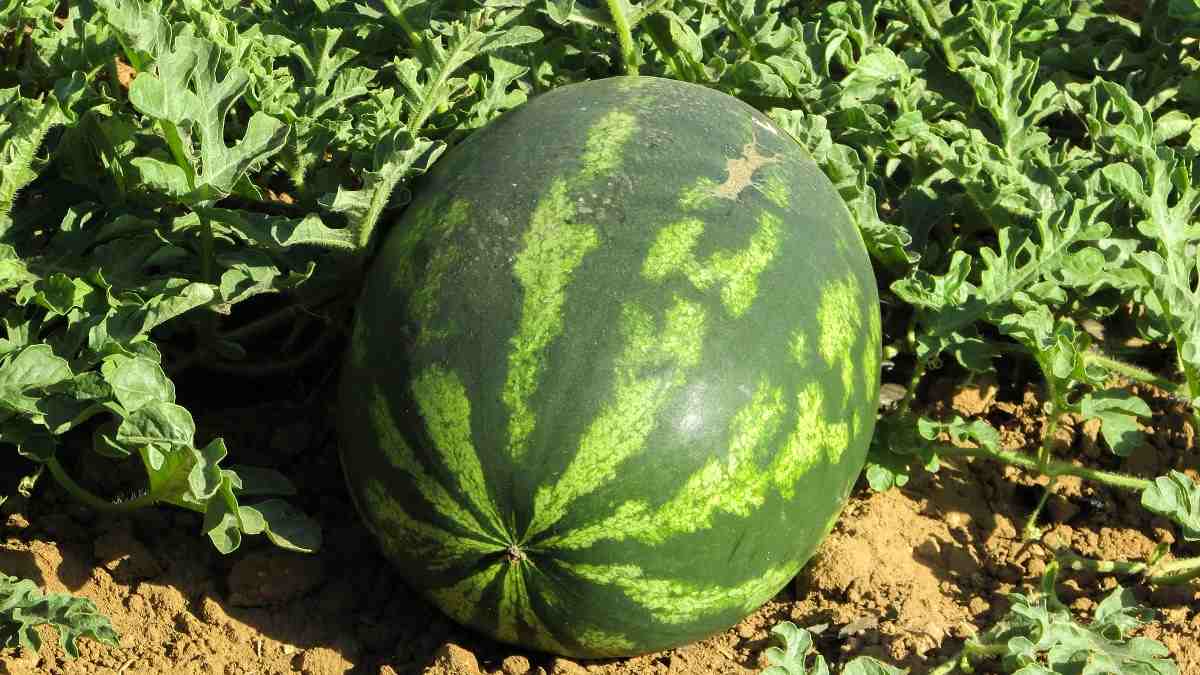Introduction to Organic Watermelon Farming
Watermelon belongs to the Cucurbitaceae family which includes squash, cucumber, and pumpkin. Watermelon is a popular dessert vegetable, with year-round availability. Watermelons vary in shape; from globular to oblong. External rind color varies from light to dark green and maybe solid, marbled, or striped.
A Step by Step Guide to Organic Watermelon Farming
Watermelon can be grown year-round in the tropics and it is a warm-season crop. By choosing suitable varieties and giving them proper care, good quality of Watermelons can be produced in the tropics. Organic production is a fast-growing sector of agriculture in the requirement of a variety of evaluations under their unique production systems.

Organic Soil Preparation for Watermelon Farming
Watermelon not only tolerates hot weather but for best growth needs more heat than any other vegetables. Watermelon seeds germinate well and plants thrive at 25°C – 30°C. Fruits mature best at 30°C. Watermelon requires plenty of sunshine and dry weather. Cloudy or continuous rain will not only stunt the plant growth but also reduce the flowering and fruit set. If Watermelons mature in the rainy season, the sugar content will be greatly decreased. Watermelons do best when grown on sandy loam or well-drained sandy soils. Poorly drained soils must be avoided. Watermelon must not be grown on the same soil year after year because of disease problems. It is best to wait 3 years before planting Watermelons on the same ground.
The site for Watermelon must have sufficient sunlight. Take away all shade plants; the soil must be fertile with good organic matter content. Melons grow best on a deep, well-drained, sandy loam or sandy soil with plenty of organic matter. Heavy soils with a lot of clay frequently cause small, weak plants that produce fewer melons. Melons prefer soils with a neutral pH value, and if the soil is too acidic the plants will drop their blossoms. Watermelon not only tolerates hot weather but for best growth needs more heat than any other vegetables.
Watermelon seeds germinate well and plants thrive at 25°C to 30°C. Watermelons grow in several kinds of soil but prefer a sandy, light, fertile loam that drains easily. Add substantial amounts of manure, compost, and leaves to your garden and work the soil well before planting. Soils with a pH value of less than 6.0 will produce plants with yellowed foliage and fewer perfect flowers. Good drainage is important for preventing disease in your melon plants. If your soil doesn’t drain water well, mix a substantial amount of organic matter into the soil before planting. We recommend mounding your soil into hills. Raised hills increase drainage and help keep the soil temperatures up. If you water with soaker hoses, mounding up a row will make watering easier. Mix in a shovel full of well-aged manure where you are planning each hill. This is particularly important if a spring crop has already been planted in this area and taken nutrients from the soil.
Mound your manure-amended soil into hills about 12 inches tall and 2 to 3 inches wide. Space each hill 4 to 6 inches apart, depending on how much space your variety needs. Adding 2 to 3 inches of compost or aged manure before planting will give your melons a nutrient boost and improve your soil’s structure. Watermelons build up sugar and develop sweetness in their final days of growth so providing the necessary warmth is important for a growing a good Watermelon crop.
Covering your planting area with plastic a couple of weeks before transplanting will warm the soil more quickly. Based on the weather, this can allow you to transplant your seedlings outdoors up to 7 to 10 days earlier than without the use of plastic. If plastic is left throughout the growing season, it will decrease ground rot in your fruit. Clear plastic mulch will heat the soil up 4 to 5 degrees warmer but black plastic will stop weed growth. Ventilation holes must be made in plastic mulch to allow oxygen into the soil. If plastic doesn’t have pre-made ventilation holes and it is still on the roll, you can use a ¾inch drill and drill your ventilation holes through the layers.
Watermelon Seed Rate and Plant Spacing
For sowing one-acre land, a seed rate of 1.5 to 2 kg is needed. Plant the Watermelon seed with a spacing of 2m between rows and 1m between the holes where the seeds are to be planted. If there is not enough rainfall, water regularly to keep the soil moist. It is best to have a watering schedule if using irrigation because the fruit becomes stressed when the pattern changes and this affects the fruit development and the spray program.
Dig holes of 45 cm wide, 45 cm length, and 30 cm deep. Mix topsoil with 2 spades full of manure and fill the hole leaving a space of 15 cm. Sow two seeds per hole. Watermelon vines require considerable space. Two crops can be planted in a year. Plant the first crop with the first or second rain, which occurs mostly around February or early March (at this time moisture is not so much; as the plant establishes, the moisture increases into the growing season). The crop sown at this time will hit the market between May and June. Plant the second crop in September (at this time, the moisture is reduced as the season is gradually folding out). The crop planted at this time will hit the market around December.
Irrigation Requirement in Organic Watermelon Farming
Watermelon is a dry season crop. It must be planted with proper irrigation. The Watermelon beds are irrigated two days before sowing and then again 5 days after sowing the seeds. As the plant grows, irrigation is done every week. Attention must be paid to water stress at the time of irrigation since it can lead to fruit cracking. While irrigating, water must be controlled to the root zone of the plant. Wetting of vines or other vegetative parts must be avoided particularly during flowering or fruiting time as wetting can lead to withering away of the flowers, fruits or even the plant as a whole. Also, wetting of the vegetative parts can lead to the development of fungal diseases. Moisture must be maintained near the roots so that the plants develop a taproot system. As the fruits near maturity, irrigation frequency is reduced and it is completely stopped during the harvesting stage. This helps in developing sweetness and flavor in the fruit.
Do not overwater a Watermelon once it has begun to set fruit or its developing natural sugars will be diluted. The leaves of a Watermelon commonly wilt in the hot afternoon sun. Water immediately if the leaves to wilt before noon or if they appeared stressed by heat or drought. Never allow the vine itself to become dry. A soaker hose or drip irrigation is the best way to deliver water to Watermelon roots; overhead watering may encourage the development of fungal diseases that commonly attack leaves.
Pollination in Organic Watermelon Farming
Female and male flowers are separate on the same plant. Bees carry pollen from flower to flower to ensure good fruit set and development. Wild bees will help, increases pollination. For normal conditions, one hive of bees should be adequate for one hectare of plants.
Watermelons do not require pruning. Though, it is better to remove the first fruit on the primary vine as early as possible, because this fruit is too near the crown that cannot develop well and will affect the later fruit setting.
Organic Manures and Fertilizers in Watermelon Farming
Watermelons are heavy feeders. Apply an organic fertilizer during planting. Spray Watermelon plants with liquid fertilizer and seaweed extract throughout the garden season. Cut back on nitrogen levels after flowers form. Continue with phosphorous and potassium applications until just before harvest.
Watermelons tolerate a wide range of pH values from 5.6 to 8.0. Watermelon plants grow healthy in soils that are rich in organic matters. Application of compost at a rate of 5 ton/acre to 6 ton/acre can improve soil aeration.
Mulching the bed surface with straw is suggested for growing Watermelon in the Tropics. Mulching not only retains the soil moisture, prevents nutrient leaching, and improve soil aeration but also control the weeds and provides support for tendril. Sugar cane leaves and rice straw are good material for mulching
Feeding Plants in Organic Watermelon Farming
You should not miss this: Hydroponic Spinach Farming.

Prepare planting beds with aged compost and aged manure or a commercial organic planting mix. Turn the soil to 12 inches deep. Add several inches of aged manure across planting beds the autumn before planting. Side dress Watermelons with compost or manure tea or a dilute solution of fish emulsion every 2 to 3 weeks during the growing season.
Watermelons can be side dressed with an even organic fertilizer such as 10-10-10 early in the season but once flowers and fruit appear, reduce nitrogen and increase phosphorus and potassium; use a 5-10-10 fertilizer.
During compost making, the organic matter needs to be covered to prevent the leaching of nutrients
- Watermelon is a heavy feeder and does well in soils with high organic content (manure)
- Based on the results of the soil analysis, prepare adequate compost for application
- The recommended rate of application is 8 tons per acre
If organic matter or manure is added, it should be well composted. Apply manure or compost at 50 to 100 pounds (23kgs to 45kgs) per 1,000 square feet, or about 2 to 4 tons per acre, to build the organic matter content of the soil. Turn the soil over so all organic matter is covered fully.
Organic Pest and Disease Management in Watermelon Farming
Viruses – If you’ve got curling, mottled or yellowing leaves, stunted growth, and reduced yields then it could be due to one of several viruses. Spread by sap-sucking pests (eg aphids and whitefly) the viruses can’t be eradicated once infected and plants should be removed.
Poor fruit set – Poor fruit set can be caused by weather conditions like excessive heat, humidity, or rainfall. Cool-weather can also be to blame. Poor pollination is another reason so try to attract more bees or give hand-pollinating ago.
Fruit drop – Dropping or shrivelling of immature fruit could be due to poor pollination, fungal disease, or dry soils.
Fruit cracking – Internal cracks in the fruit can be caused by low temperatures when ripening. It’s most common in the large Watermelon varieties so there might be a genetic factor at play. Fruit will still taste yummy.
Small fruits – Small fruits caused by a lack of water or nutrients. Remember Watermelons need plenty of both. Hard compacted soils can also be at fault so use eco-flo gypsum to improve aeration.
Nematodes – Stunted growth and lumps on roots indicate that tiny nematodes have attacked the roots. More commonly seen in sandy soils and hot climates. Pull out the plant and boost the organic content in the soil with composts and manures. Reduce nematode numbers by practicing crop rotation.
Striped and Spotted Cucumber Beetles – These pests spread bacterial wilt throughout your crop when they feed; they tend to attack around the time the plants begin flowering. For Watermelon male flowers will appear first, at leaf joints on the main stem and female flowers will appear about one week later, female flowers will develop off of secondary side-shoots.
Your best defence against these pests is to cover your plants with row covers until flowering. The covers must be removed once the female flowers appear so that the bees can access the plants for pollination.
A severe infestation can be controlled with pyrethrins; the pyrethrins are a pair of natural organic compounds that have potent insecticidal activity.
Melon Aphids – Aphids are tiny pear-shaped insects with long antennae that suck sap from the plant, causing the leaves to become distorted and drop. Crushing several cloves of garlic into a spray bottle filled with water and spraying mixture on the plants can often deter these pests. Insecticidal soap, pyrethrins, and neem oil are also effective organic insecticides for heavy infestations.
Armyworms – Armyworms spell big trouble if they’re in your garden. Unlike other caterpillars, armyworms feed as a group for most of their lives, quickly skeletonizing leaves and scarring fruits. Like any caterpillars, they can be hand-picked when they’re out feeding, but if your armyworm problem is pretty severe, you may be better off applying Bacillus thuringiensis (Bt) or Spinosad to your Watermelon plants.
Cucumber Beetles – These bugs don’t even try to hide their damage to your Watermelon patch, and often feed openly on leaves and flowers. Use a floating row cover over your Watermelons before cucumber beetles appear to help prevent problems.
Leaf miners – Leaf miners create some of the most dramatic-looking damage in the garden without actually harming most plants. Watermelon leaves will look as if something has painted white, wandering lines across their surfaces and may have white blotches to go along with these tunnels. They look terrible but rarely cause serious problems, so try not to worry about leaf miner activity. If it bothers you and is limited to a few leaves, you can always pick them off.
Spider Mites – They’re not technically bugs, but spider mites are frequent garden visitors. Spider mites also spin thin bits of silk as they feed, making it easy to identify the culprit. Treat spider mites with neem oil weekly until your plants are happy and healthy again.
When and How to Harvest Watermelons
Determining when to harvest Watermelons can be difficult and needs some experience. Allow 80 to 90 days for bush varieties to reach maturity and 90 to 100 days or more for the larger varieties.

Watermelons must be harvested at the right stage of maturity and handled gently enough to avoid damage to ensure market quality. Good quality melons are firm, symmetrical in shape, fresh, attractive, and of good colour. The external rind colour can vary from deep solid green to gray, depending on the variety. A key indicator of a Watermelon’s maturity is the tendrils on vines change from green to brown. A ripe Watermelon fruit will easily be picked from the vine. Watermelons must be harvested before vines become withered, in which case the fruit is over mature. Over maturity is characterized by flesh mealy in texture and reddish-orange in colour.
In case if you are interested in this: Growing Cherry Trees In Pots.